Behind the scenes... ceramic technician
Written by Annette O'Shea On 27 september 2023
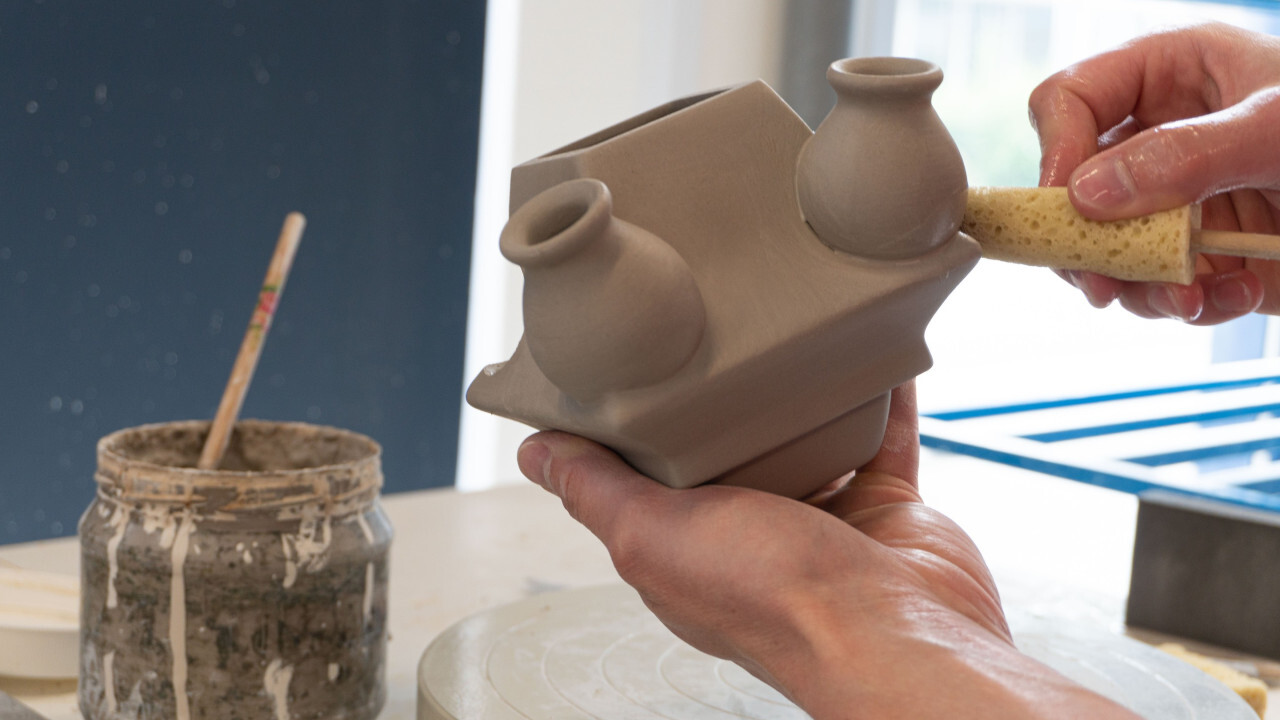
Making Delft blue pottery is a process that has hardly changed in the past four hundred years. Come and take a look inside the Heinen Delfts Blauw factory where Delft blue pottery is still made in an authentic way. Follow our ceramic specialists step by step and discover how many people have handled a Delft blue vase before it reaches the store.
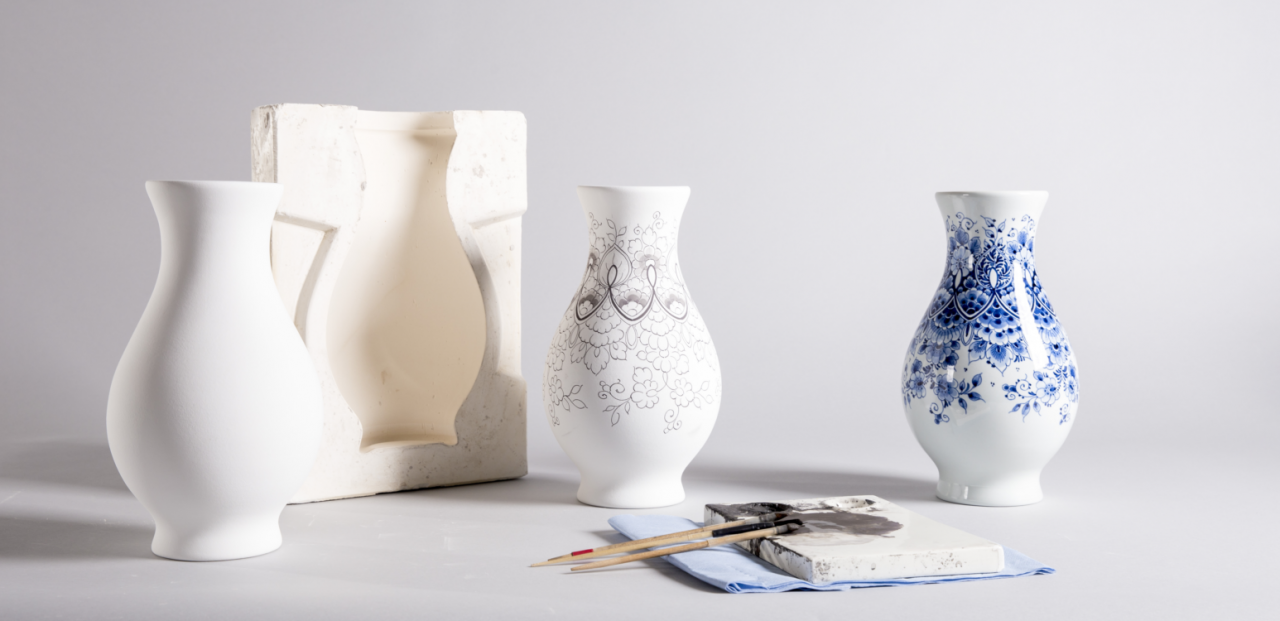

Ceramic specialist: Hamid Reza Shargh
A high-quality Delft blue product starts with knowledge of the craft and Hamid has that knowledge in his head and in his fingers like no other. He started his career as a goldsmith where he gained a lot of knowledge of working with different materials, but today Hamid is responsible for the production of handmade Delft blue pottery at Heinen Delfts Blauw. And there is more to it than is often thought.
Clay from all over the world
“To make a beautiful Delft blue product, you start with the right raw materials,” says Hamid from the Delft blue factory in Putten. There is not a speck of dust on the floor, which is unusual for a space where many mineral raw materials are used. Hamid sets high standards for his workplace, just like he does for the clay he makes. "People often think that you can buy the clay we use anywhere, but that is not the case. Our clay consists of at least ten different raw materials that we mix together ourselves. We source these raw materials from all over the world. The best quartz comes from the Netherlands, but we get the best clay from England or Germany. This clay turns into a beautiful white, while the clay from France turns red. Our clay consists of quartz, kaolin and chalk and the composition of the clay, the glaze and the engobe (a thin layer of liquid clay) varies per product.”
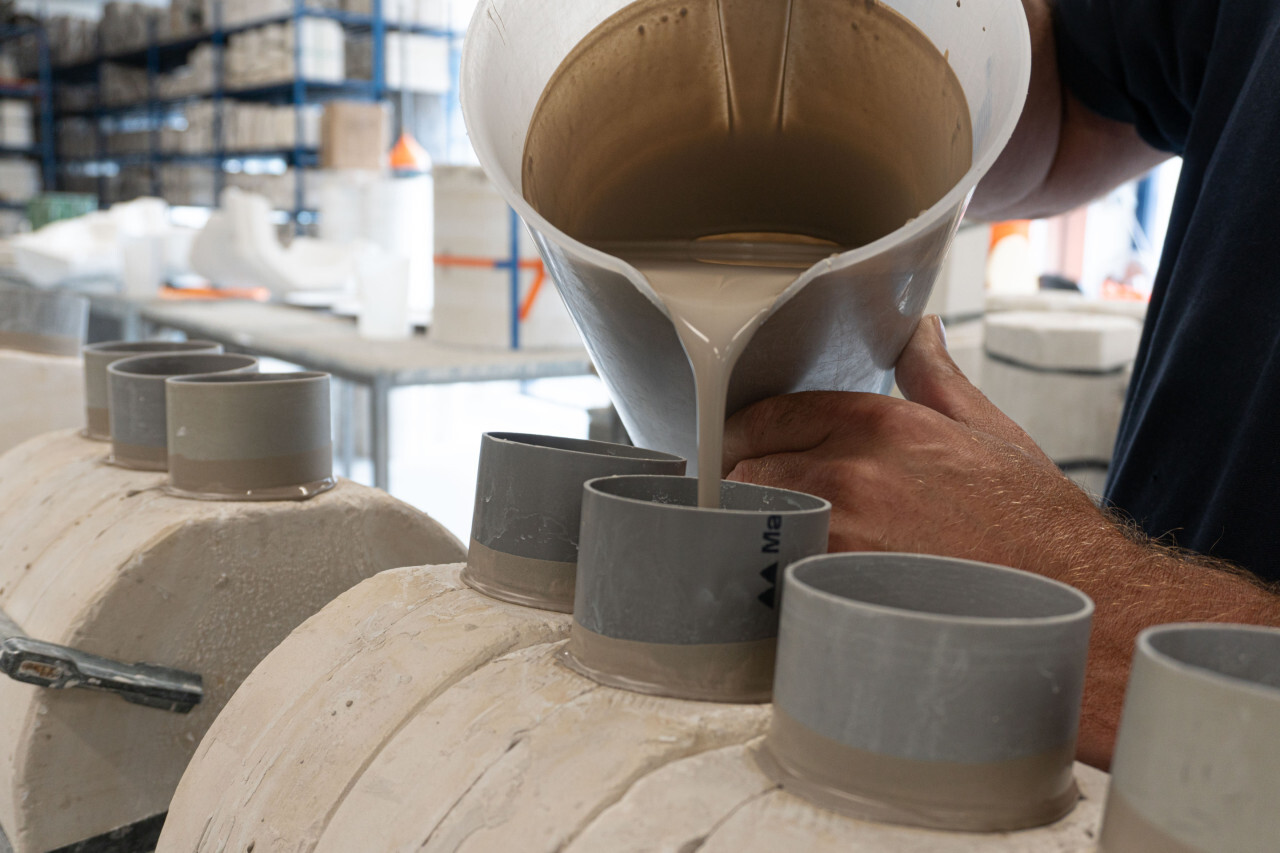
“The knowledge of this subject is almost extinct compared to a few centuries ago, so you have to reinvent everything.”
This composition of individual raw materials must be done very accurately, because even the smallest change in the recipe causes a difference in the end product. “It's about trying things out, gaining experience and gradually putting together the recipes for the clay and the glaze. For example, if we want a slightly bluer shade in the glaze, we must adjust the proportions of the ingredients slightly. This is a purely artisanal process and the knowledge of this trade is almost extinct compared to a few centuries ago. Just look at how many pottery factories there used to be in Delft and how few are left now. That is why you have to try everything yourself and Heinen Delfts Blauw has years of experience in putting together the right recipes.”

Secret recipe for Delft blue paint
“We also mix the iconic Delft blue paint ourselves. The paint consists mainly of cobalt oxide, but otherwise it is a secret recipe! Making this paint takes eight days. We add all the ingredients from our recipe to a barrel containing porcelain balls. This barrel is rotated on the paint mill for eight days so that the porcelain balls grind the paint finely and make it suitable for the painters to use. We make Delft blue paint, but also all other colors needed for our polychrome products.”
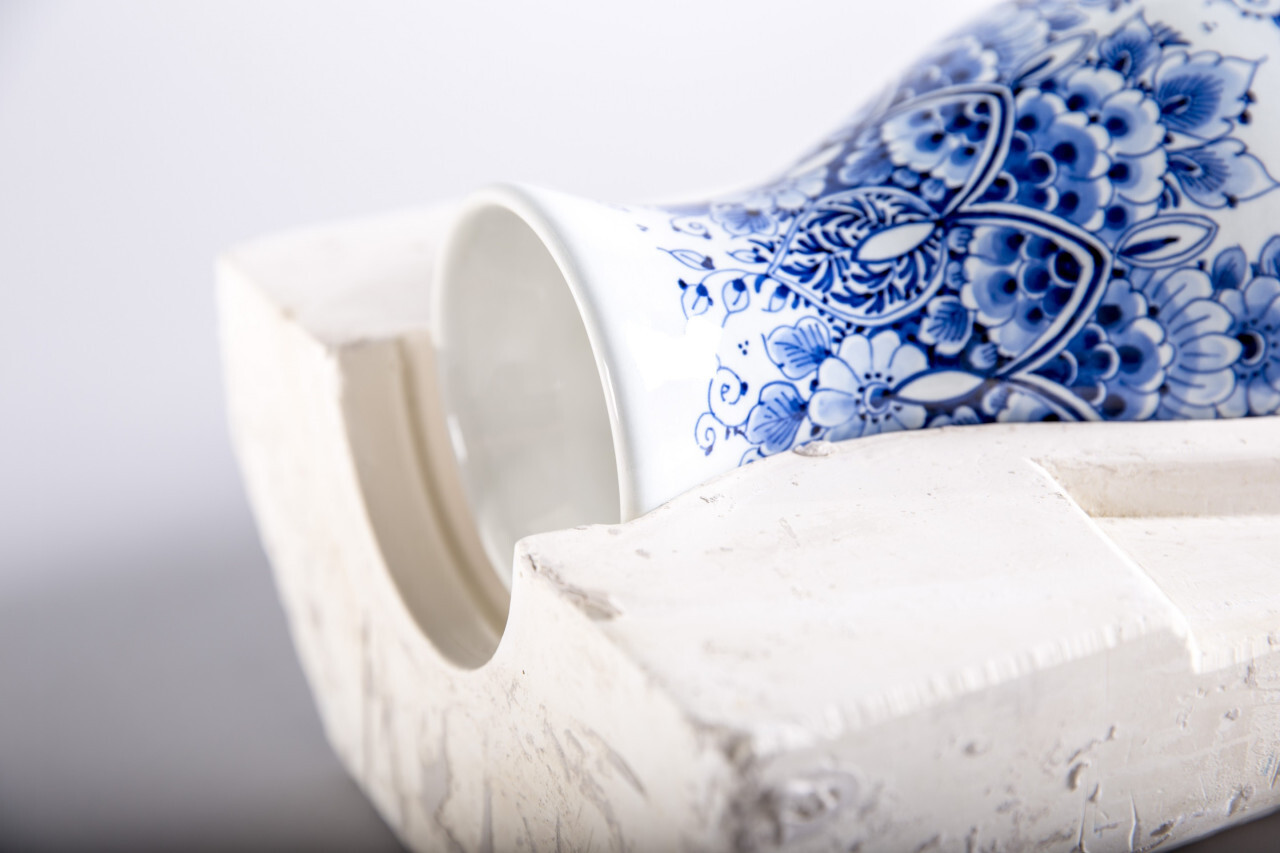
Shaping the mold
Once the clay and paint are ready, there must of course also be a product that can be painted. “We work 99% of the time with liquid clay that we pour into molds. We used to employ a real mold maker, and to this day we still make our own molds. We do this by first making a mother mold, a solid mold with which we can make a hollow casting mold. This casting mold is always made of plaster, because this material sucks the moisture from the liquid clay and therefore dries the clay slowly. The longer you wait before opening the mold, the more solid the product becomes. This is because the layer of clay that touches the plaster mold dries first. This way, the middle part of the cast clay remains liquid and we can easily empty the rest of the mold. What remains is the beginning of a beautiful porcelain vase.”
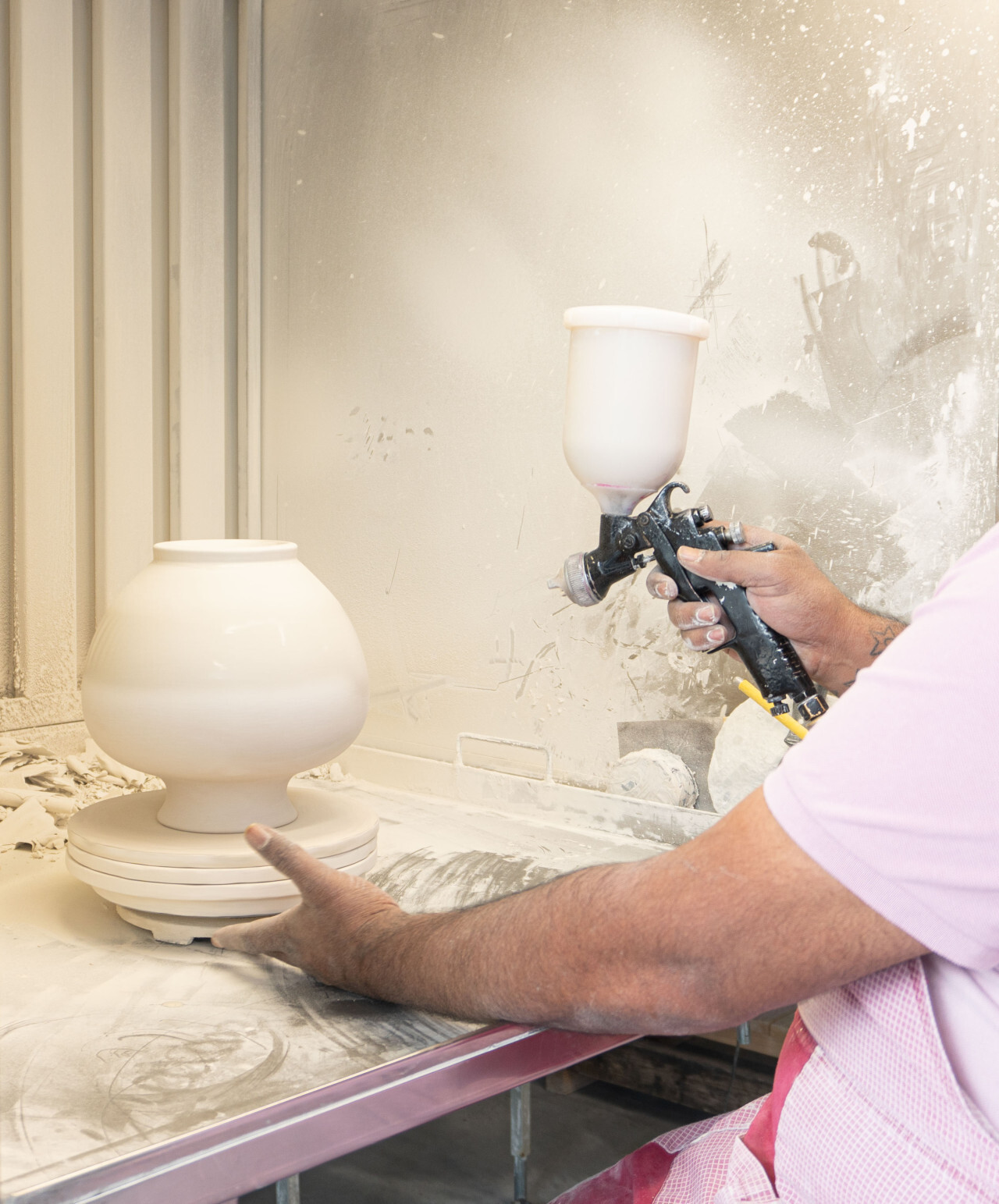
Find the right shade of blue
The hardened, cast product is then smoothed with water and a sponge, casting edges are cut away and an engobe layer is applied to make the surface suitable for the painters. “The more porous the surface, the more different shades of blue the master painters can create. This makes the final product more vibrant. After painting, the master painters bring the product back to us to spray a layer of glaze over it and then put it in the oven. We bake at 1200 degrees Celsius. This temperature is very important to achieve the correct color blue. If you bake it too hot, the color will turn purple, for example. After years of experience, we have now grown into one of the largest producers of Delft blue hand painting. When we first started we had little information, but gradually, through experimentation and perseverance we matured our product. It's like we put a seed in the ground, watched it grow, and in the process learned to care for it.”
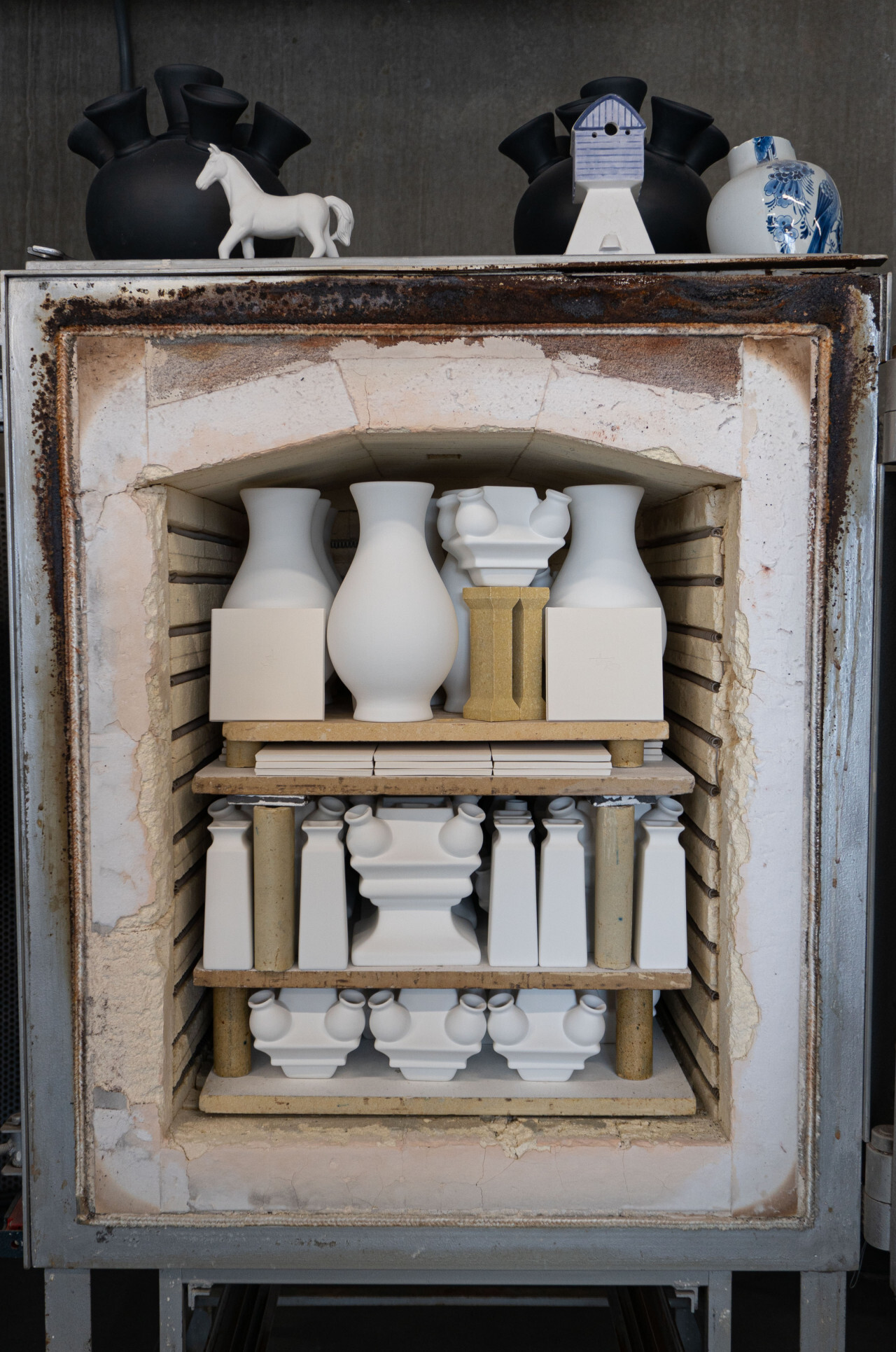
P.S. Did you count? From mixing the clay to casting, polishing, painting, glazing, firing, final inspection and placing it in the store, eight pairs of hands were busy making one Delft blue vase!
